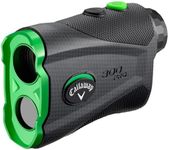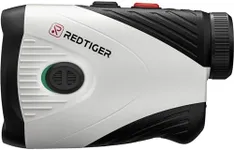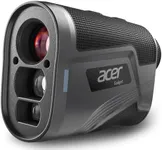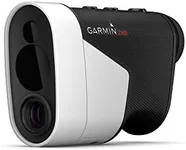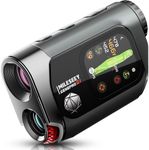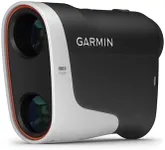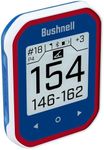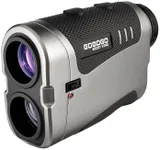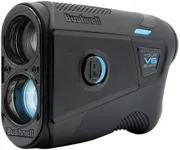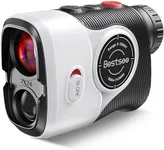Buying Guide for the Best Golf Rangefinders
Shopping for a golf rangefinder can make a big difference in your game, helping you judge distances more accurately and choose the right club for each shot. The right rangefinder should feel easy to use, offer reliable measurements, and fit comfortably in your hand or bag. When deciding, you should think about how and where you’ll use it, as different features can be helpful depending on your playing style and course conditions. The most important thing is choosing a model that matches your skill level and needs, while being simple enough to use every round.RangeRange refers to the maximum and minimum distance a rangefinder can accurately measure, usually given in yards or meters. This spec is crucial because it determines whether the rangefinder can cover the full length of holes you typically play. Shorter ranges (up to 400 yards) are fine for regular or smaller courses, while longer ranges (800+ yards) can be helpful if you play on longer courses or want to measure to distant hazards or landmarks. For most golfers, a rangefinder that goes up to 600 yards is sufficient, as most shots are within this range.
AccuracyAccuracy is how close the rangefinder’s measurement is to the actual distance, often listed as +/- 1 yard or better. This matters because greater accuracy helps you trust the readings and make more confident club choices. Top-tier accuracy is around half a yard, while more basic models may offer 1-2 yards of accuracy. If you are a serious player or often play competitive golf, select a rangefinder with higher accuracy. For casual play, 1-2 yards is usually acceptable.
Optical Quality/MagnificationOptical quality covers how clear and bright the view through the rangefinder is, while magnification describes how much bigger the target appears—common values are 5x or 6x. Clear optics and decent magnification help you quickly spot the flag or hazards, even at distance or in low light. Higher magnification is helpful for identifying distant targets, but if it is too high, it can make hand shakiness more noticeable. Most users find 5x or 6x magnification a good balance, providing a clear view without too much jitter. If your hands are steady, higher magnification may help; otherwise, stick to moderate levels.
Slope MeasurementSlope measurement is a feature that accounts for changes in elevation between you and the target, giving you a 'play as' distance rather than a straight-line measure. This is valuable on hilly courses, letting you adjust your shot for uphill or downhill changes. However, note that slope features are not allowed in official tournament play unless they can be turned off. If you mainly play for fun or on courses with lots of elevation changes, a rangefinder with slope can be very useful. If you compete in tournaments, choose one with a slope-disable option or a standard model.
Ease of Use and SpeedEase of use covers how simple the controls are and how quickly the device locks onto targets and delivers readings. This is important so that the rangefinder doesn’t slow down your game or distract you from focusing on your shots. Some models have extra features like vibration when the flag is locked or large, easy-to-read displays. If you prefer quick rounds and don’t want to fiddle with buttons or wait for the reading, look for a rangefinder that gets distances in under a second with intuitive controls.
Size and WeightSize and weight affect how comfortable the rangefinder is to carry and use during the round. Compact, lighter models are easy to slip in your pocket or mount to your bag, while heavier ones may offer more robust construction but can be tiring to carry. If you walk the course or want to keep things simple, choose a lightweight and compact rangefinder. Larger models might suit you if you prefer a more solid feel or leave your device in the golf cart.
Durability and Weather ResistanceDurability refers to how well the rangefinder can handle drops, bumps, and regular outdoor use, while weather resistance means the device can handle rain, humidity, or dust. These features are important if you often play in all weather or are a bit rough with your gear. If you play frequently or in variable climates, lean toward models with at least water resistance and rubberized grips to withstand the elements.
Battery LifeBattery life indicates how long the rangefinder will work between changes or recharges. Some run on standard batteries, while others use rechargeable ones. Long battery life means less worry about running out midway through a round. If you don’t want to change batteries often, look for models that offer several months of use per battery or have convenient charging options. If you often forget to check batteries, a model with a battery indicator is helpful.
